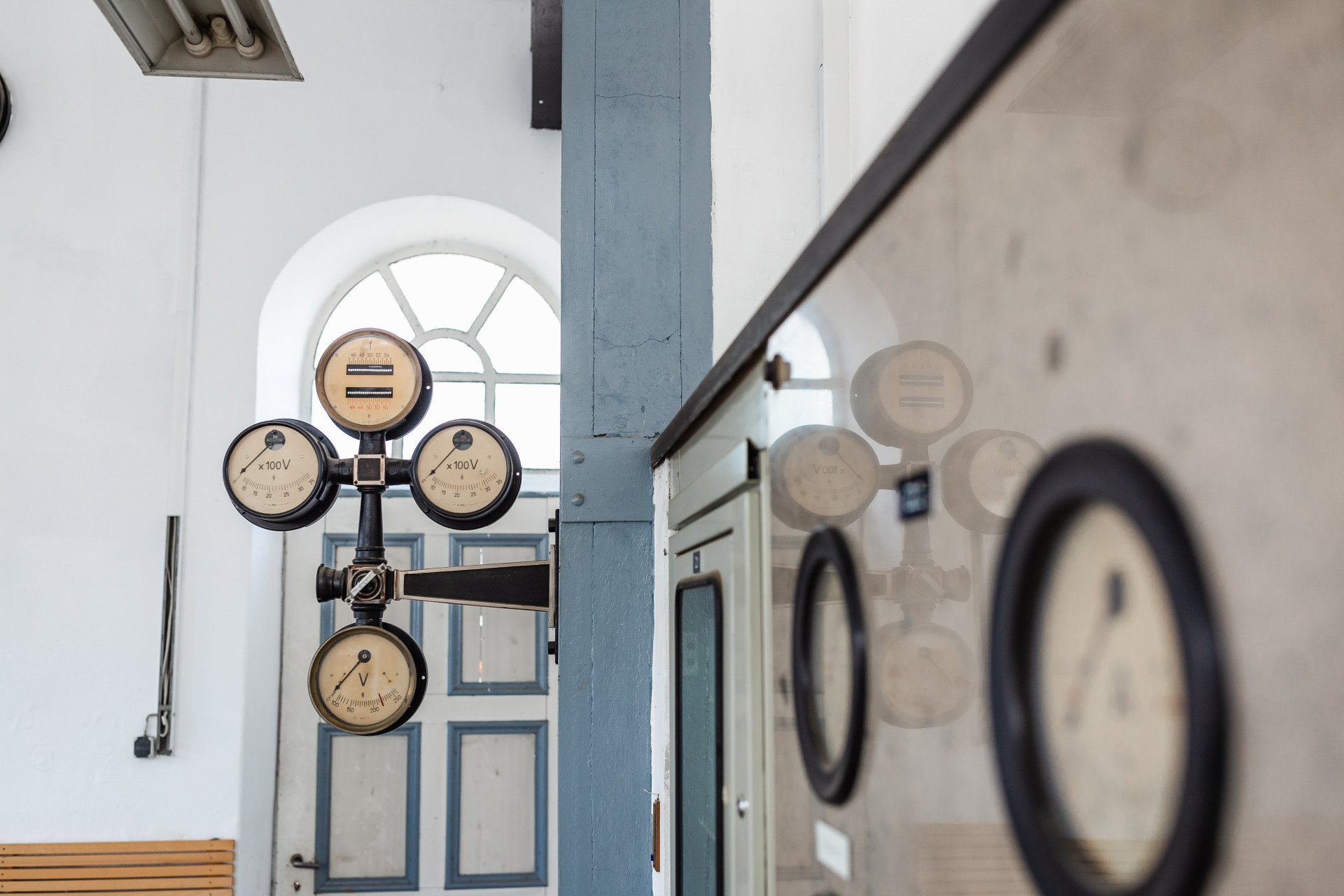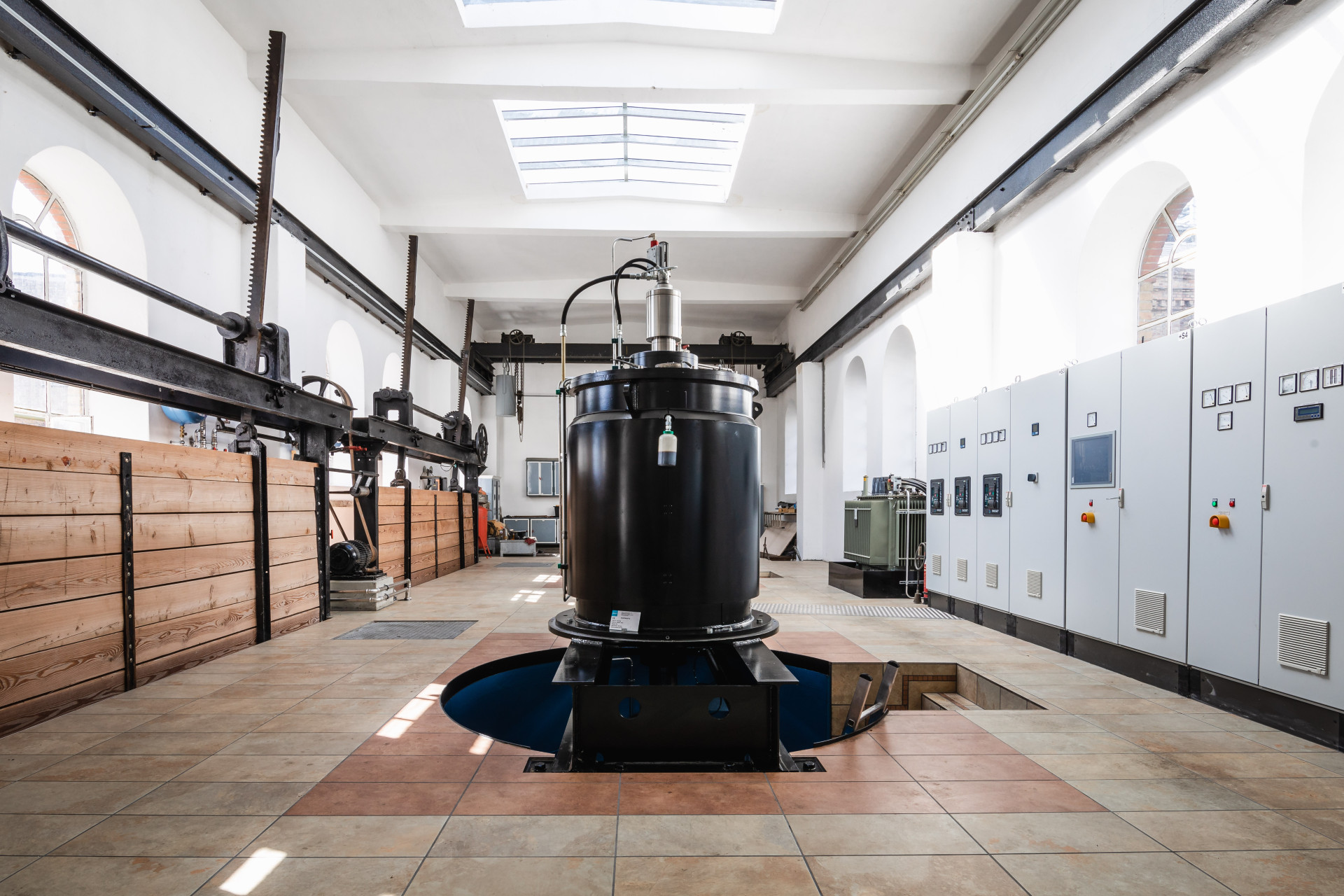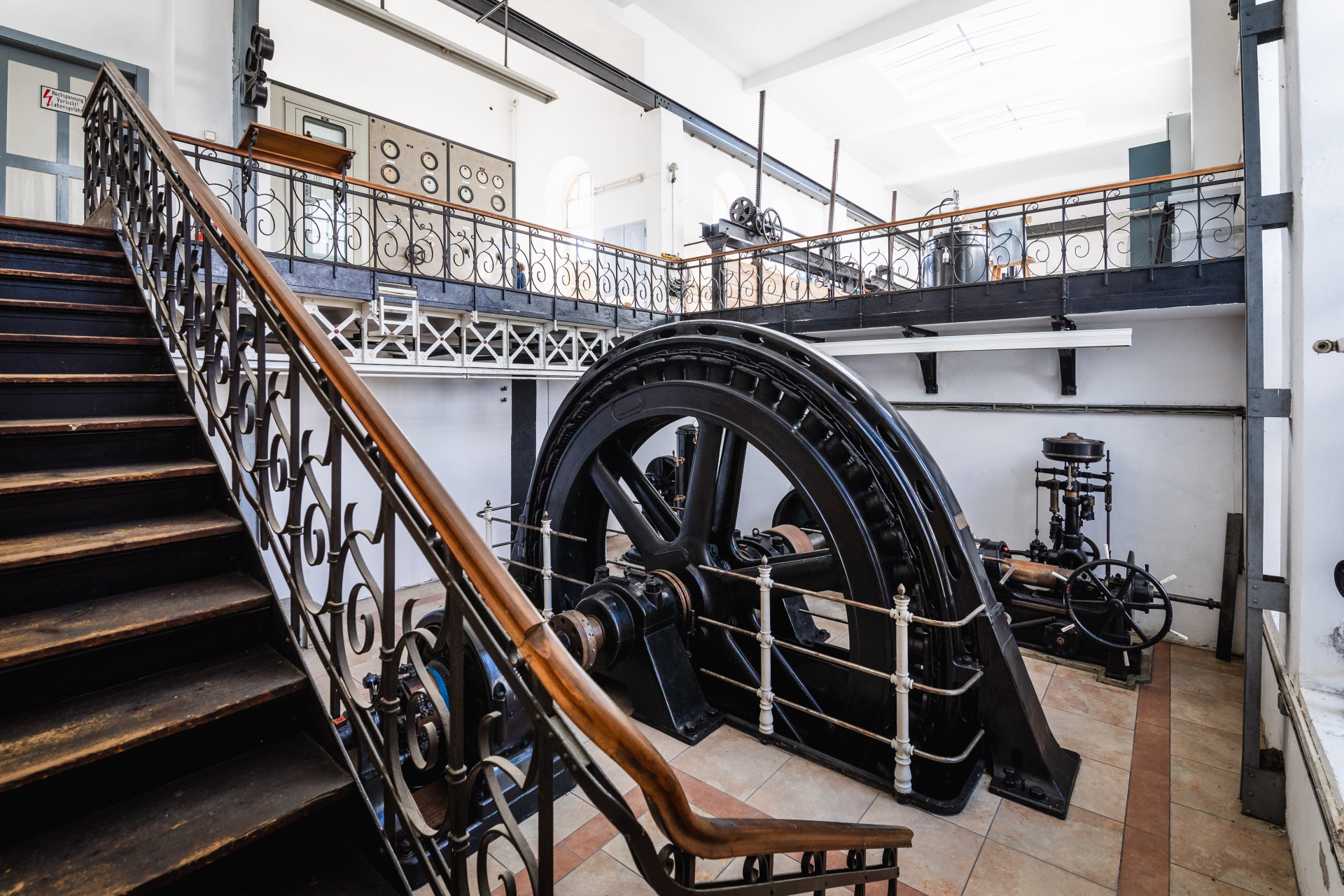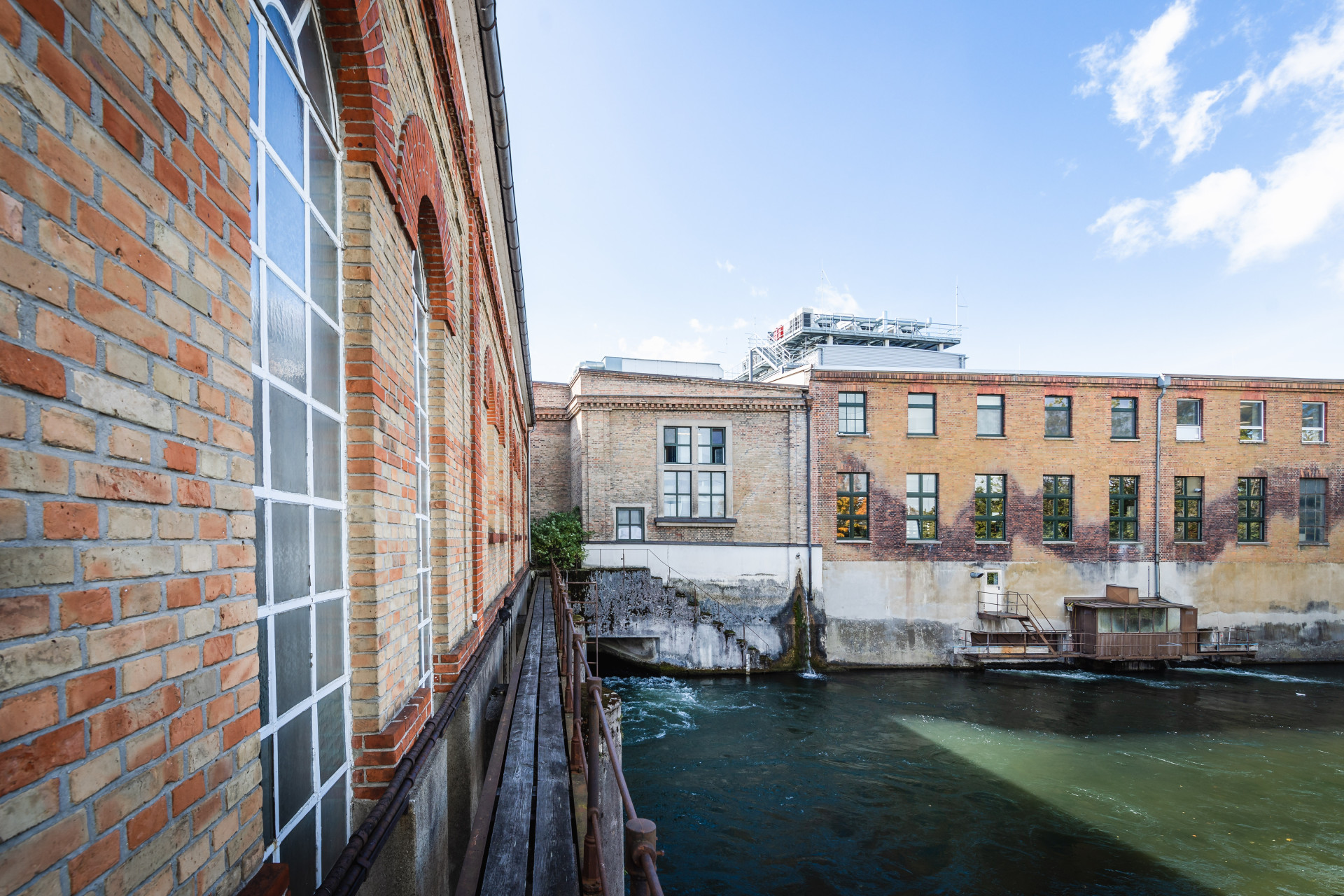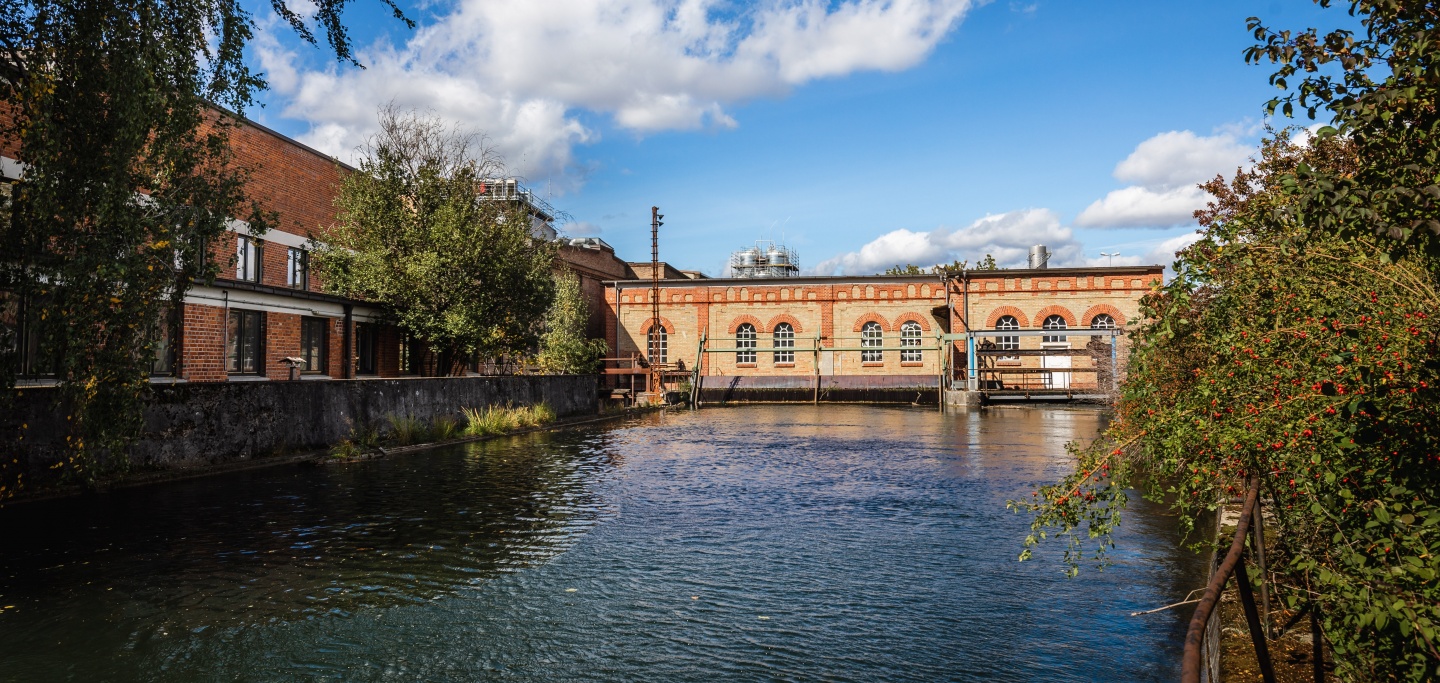
12
Power plant at the Stadtbach
The first power stations in Augsburg powered factory machinery directly in transmission operation. Since 1875, the power station at Stadtbach had supplied the cotton mill, then the largest spinning mill in the German Empire.
Building history and description
- Hydroelectric power plant, still in operation, on the city stream on the premises of MAN Diesel and Turbo
- Augsburg, right of Wertach; between Sebastianstraße and Stadtbachstraße
- Planning for the regulation of the Stadtbach 1826
- Founding of the cotton spinning mill on the Stadtbach from 1853
- Construction of the power plant 1873-1875
- Conversion and addition of a Siemens Schuckert generator 1907
- final takeover of the cotton spinning mill on the Stadtbach by Dierig in 1937
- Power plants on the Stadtbach, Wolfzahnau and Proviantbach originally belonged to the cotton mill on the Stadtbach
- predominantly one-storey solid construction with flat roof over an angular floor plan
- eastern head offset one floor down (thus forming a hall over two full floors)
- Facade divided into four fields of different widths (corresponds to confluence of two canals at this point, narrowest wall field over Malvasierbach, two over Stadtbach, fourth and widest wall field on the outlet side of the power plant)
- Round arch window with cast-iron sprouts
- Exposed masonry of red and yellow brick
Use and purpose
- Type of power transmission at the time of origin until today unclear (transmission drive or generator)
- three enemas, two used today
- west of the building Schusskanal (with height of fall of 3.85 m)
- Turbines in reinforced concrete construction installed in the canal bed
- Technical Equipment:
- two Kaplan turbines with vertical wave
- two generators of the Kössler family from the 1990s
- one generator of the Siemens Schuckert works from 1907 as a showpiece
- Today, 16.20 cubic meters of water per second flow through two turbines at a fall of 3.95m, power up to 825 hp
- Power plant as an object of the UNESCO World heritage stands for:
- Further development from small-scale to industrial scale
- Further development from a simple waterwheel to a highly effective turbine
- Early replacement of mechanical transfers of hydroelectric power in the region by electrification
- Early replacement of local hydropower and electricity generation by decentralized run-of-river power plants
- Use of renewable energies benefits the environment,
- "Augsburg tradition" of sustainability as a global role model
Power plant at the Stadtbach in 3D
Authenticity and unique features
- only Siemens Schuckert generator as a showpiece
- Building fabric almost completely preserved
- Energy generation is fed into the public grid today
- The oldest power plant of the cotton spinning mill on the Stadtbach, the largest spinning mill within the German Customs Union
- Mediation of the technical development at a very well preserved, exemplary hydroelectric power plant

